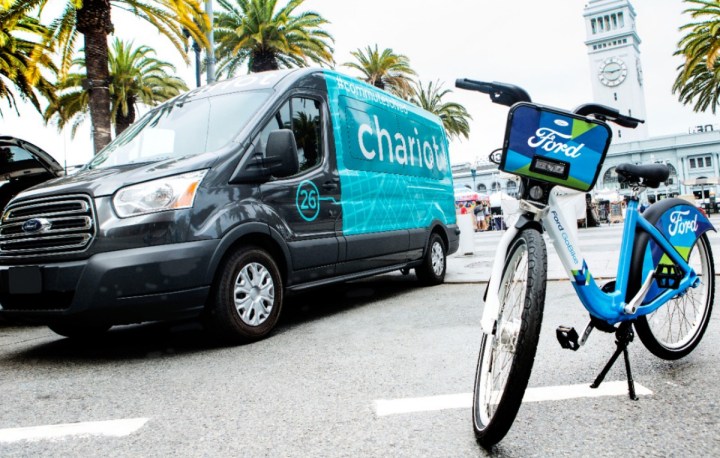
“On three separate inspections of Chariot Transportation, Inc., it was discovered drivers without valid Class B California Driver Licenses were driving passenger buses which required a Class B license,” CHP Public Information Officer John D. Fransen told TechCrunch. “This resulted in an unsatisfactory rating for each inspection. The carrier was advised that continued unsatisfactory ratings would result in denial, suspension, or revocation of the carriers California Public Utilities Commission (CPUC) operating authority.”
Why do these inspections matter so much? As Fransen explained, these processes are in place in order to “prevent passenger bus traffic collision-related deaths.” That means that Chariot’s repeated failure of these tests points to a potentially serious problem.
This isn’t the first time Chariot has gotten into trouble with city regulators in San Francisco. Earlier in October, the company was told to stop clogging up routes taken by existing public transportation options. Apparently, having Chariot and other mass transit solutions on the road at the same time was actually creating more traffic, rather than helping ferry customers more efficiently.
Chariot has informed customers of the issue, and recently sent an email reading, “We are temporarily pausing our commuter service beginning this afternoon. We sincerely apologize for the inconvenience and will alert you immediately once we reopen service, as we expect to resolve this disruption quickly. In the meantime, we recommend you use an alternate means of transportation and we will refund pre-paid passes for any missed rides.”
The email continued, “We are committed to always providing our riders with safe and reliable service, and we comply with regulatory orders even when we disagree with them. Even though Chariot is in full compliance with all regulations, we have received an order from a regulator to temporarily suspend service. We are working to resolve this matter as quickly as possible using appropriate legal processes, and will provide updates to our riders as soon as we are able.”
The company is still maintaining services in New York, Seattle, and Austin, Texas.
Editors' Recommendations
- Waymo robotaxi attacked and set on fire in San Francisco
- An autonomous car in San Francisco got stuck in wet concrete
- Lyft to return its electric bikes to San Francisco after battery fires
- Lyft pulls its bikes from San Francisco streets after apparent battery fires
- San Francisco won the battle, but the war on facial-recognition has just begun


